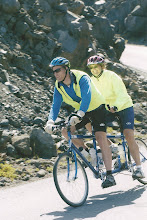Named after a polish general who died in Savannah during the Revolutionary War, Fort Pulaski was built after the War of 1812 to protect Savannah from attack by from the Atlantic Ocean by guarding one of the rivers that let to Savannah. It was designed and the construction overseen by Robert E. Lee when he was just a lieutenent.  This is a demonstration of a soldier (Union uniform) firing a rifle. Changing from balls to pointed tips, Ammo changed design during the life of this fort. The ridges in the casings of the guns caused the bullets to be more accurate than the ball bullets. The soldier wore a Union uniform on the date we visited as 150 years ago this fort was under Union control. At one point the governor of Georgia ordered the fort to be under Confederate control and was until the Union Army attacked it from Tybee Island. The attack blasted at the SE corner of the fort continually until the wall was penetrated. As several points in this wall were at least eight feet thick of solid brick, this fort was thought to be a solid fortress.
This is a demonstration of a soldier (Union uniform) firing a rifle. Changing from balls to pointed tips, Ammo changed design during the life of this fort. The ridges in the casings of the guns caused the bullets to be more accurate than the ball bullets. The soldier wore a Union uniform on the date we visited as 150 years ago this fort was under Union control. At one point the governor of Georgia ordered the fort to be under Confederate control and was until the Union Army attacked it from Tybee Island. The attack blasted at the SE corner of the fort continually until the wall was penetrated. As several points in this wall were at least eight feet thick of solid brick, this fort was thought to be a solid fortress.
 This is a demonstration of a soldier (Union uniform) firing a rifle. Changing from balls to pointed tips, Ammo changed design during the life of this fort. The ridges in the casings of the guns caused the bullets to be more accurate than the ball bullets. The soldier wore a Union uniform on the date we visited as 150 years ago this fort was under Union control. At one point the governor of Georgia ordered the fort to be under Confederate control and was until the Union Army attacked it from Tybee Island. The attack blasted at the SE corner of the fort continually until the wall was penetrated. As several points in this wall were at least eight feet thick of solid brick, this fort was thought to be a solid fortress.
This is a demonstration of a soldier (Union uniform) firing a rifle. Changing from balls to pointed tips, Ammo changed design during the life of this fort. The ridges in the casings of the guns caused the bullets to be more accurate than the ball bullets. The soldier wore a Union uniform on the date we visited as 150 years ago this fort was under Union control. At one point the governor of Georgia ordered the fort to be under Confederate control and was until the Union Army attacked it from Tybee Island. The attack blasted at the SE corner of the fort continually until the wall was penetrated. As several points in this wall were at least eight feet thick of solid brick, this fort was thought to be a solid fortress. Past the outer wall was a drainage system which also had a "moat" effect in protecting the entrance to the fort which had a drawbridge on the endtry.
Past the outer wall was a drainage system which also had a "moat" effect in protecting the entrance to the fort which had a drawbridge on the endtry. From one side looking at the other side of the extensive forts. There are no rails on the interior and a fourteen foot drop off. On the other side of the far wall was the river and Tybee Island on the opposite shore.
From one side looking at the other side of the extensive forts. There are no rails on the interior and a fourteen foot drop off. On the other side of the far wall was the river and Tybee Island on the opposite shore. In front of each huge cannon was a Sabrina sized shelf. We are not sure what these were for but I suspect cannons or something that might need to be stored out of the way.
In front of each huge cannon was a Sabrina sized shelf. We are not sure what these were for but I suspect cannons or something that might need to be stored out of the way.This fort was given the fame of being part of the Underground Railroad as escaped slaves would come to this fort and the captain in command would usually find them a way out. They could come to the fort and be given some food and refuge on the property surrounding the fort. This was happening before the Emancipation Proclamation and Lincoln felt pressure from the actions at this fort.












No comments:
Post a Comment